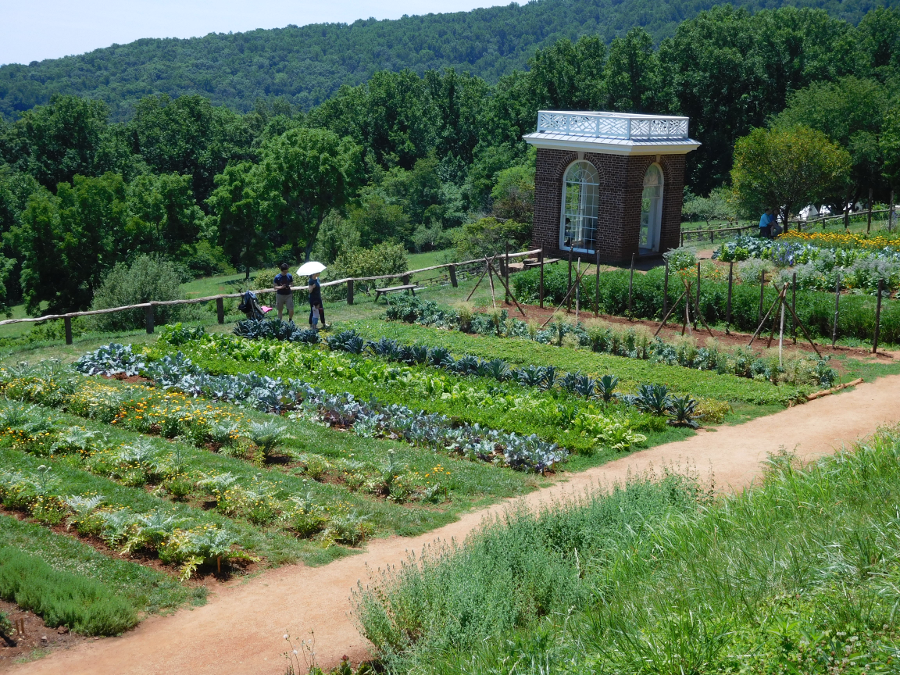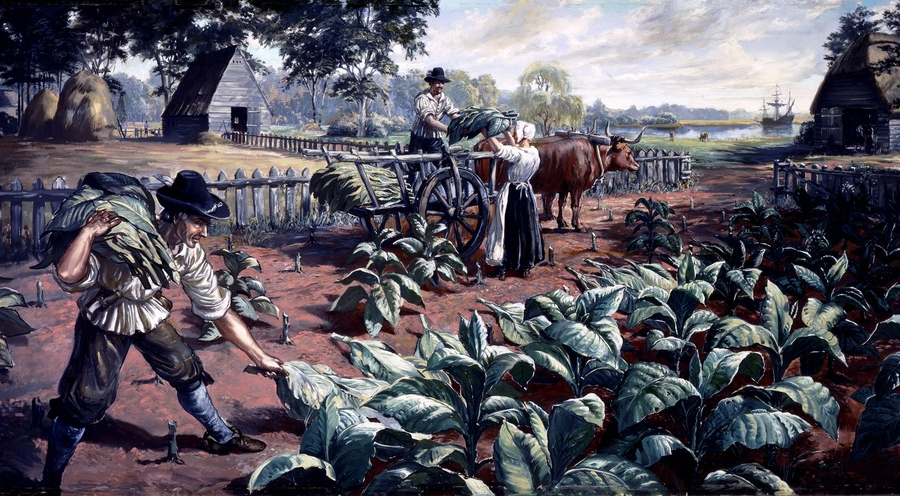
garden at Monticello

garden at Monticello
The English came looking for gold, or a way to intercept some of the Spanish gold. After 5 years of struggling to survive, they discovered that the path to wealth in Virginia was through growing tobacco. They shipped it home to England, purchasing most of their manufactured goods from overseas with credit from the tobacco sales.
When you see references to "subsistence agriculture" in Virginia, adjust it to "self-sufficient" in your thinking... Today, much of the hay and corn grown in Virginia is still used on the farm by people or animals. Of course, the produce from large family gardens may also be used on the farm rather than sold for cash. In theory at least, farmers need a smaller cash income to maintain the same quality of life as urban residents - farmers can grow much of their own food and don't need to earn cash to pay for store-bought food, right?
Farmers may pay a little less at the grocery store, but cars, electronics, clothing, furniture, etc. require cash. Farmers don't get a discount on a cup of coffee and some snack food from the local Sheetz or 7-11, either. Food is a relatively small percentage of most family budgets, so farmers need essentially the same household income as suburbanites to enjoy the same standard of living in modern times.
One traveler in 1686 noted that Virginia was rich in land and timber resources:1

in the 1600's, both husbands and wives in families of recently-freed indentured servants grew tobacco without any enslaved workers
Source: National Park Service, Tobacco Production (by Sidney E. King)